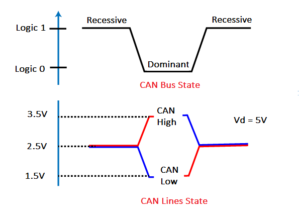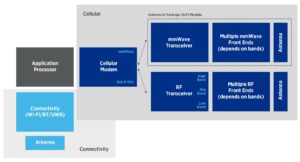The CAN (controller area network) protocol was developed by the European automotive electronics company Robert Bosch GmbH in 1983 for in-vehicle networks. The intention behind the development of the CAN protocol was to enable robust data communication between different electronic control units (ECU) and microcontroller control units (MCU) of a vehicle on a single wire […]
FAQ
What are the top tools for developing embedded software?
The embedded software or firmware is the brain of an embedded device. This type of software, however, works differently than conventional forms found on PCs or mobile devices — these are generic and work identically on such operating systems. PC software runs without directly accessing the underlying hardware. The purpose of embedded software works alternatively […]
What is MicroPython?
MicroPython implements the Python 3 programming language for microcontrollers and microcomputers. It is a firmware solution designed to implement the high-level language features of Python into low-level hardware platforms. The firmware is optimized to run in constrained environments while allowing a small subset of Python 3 standard libraries into embedded programming. MicroPython firmware can run […]
The top computer vision tools for embedded systems
Computer vision is reaching new levels, far beyond basic image processing. This is thanks to the integration of artificial intelligence. AI now enables computers and systems to derive meaningful information from digital images that can be used in advanced industries. Currently, one of the most common applications is in security and surveillance. A computer vision […]
5G mmWave test builds on RF best practices
The high level of integration in today’s mmWave phone means traditional test methods no longer apply.
What embedded protocols can you use for optical connectivity?
Communication protocols and protocol stacks, such as peripheral component interconnect express (PCIe), compute express link (CXL), Aeronautical Radio, Inc. 818 (ARINC 818), Joint Electron Device Engineering Council (JEDEC) standard 204/B/C/D (JESD204B/C/D), Fibre Channel, and so on, are formal descriptions of digital message formats and rules. They are separate from the physical transport layer, although some protocols […]
How can TinyML support sustainability on the edge?
Sustainability can be in the eye of the beholder. That’s certainly true for the question of how can TinyML (tiny machine learning) support sustainability on the edge? From a societal perspective, The United Nations Educational, Scientific and Cultural Organization (UNESCO) believes that TinyML can help to achieve its Sustainable Development Goals (SDGs). From an engineering […]
RFID upgrade pushes “ancient” pneumatic-tube system into the 21st century: Part 2
Adding simple RFID tags to hospitals’ widely used pneumatic-tube systems has dramatically improved performance without needing a system rebuild. Wireless solves the problem — and does more Modern electronic technology has reinvigorated the pneumatic tube system to do more and do better without requiring more tube pathways. This can apply to upgrading an existing installed […]
RFID upgrade pushes “ancient” pneumatic-tube system into the 21st century: Part 1
The addition of simple RFID tags to hospitals’ widely used pneumatic tube system has dramatically improved performance without needing a system rebuild. Although email and the web have greatly diminished the need for physical mail in many situations, it’s important to remember that there are many real-world scenarios where a tangible, physical object must be […]
Teardown: Amazon 4th generation Echo Dot
One of the latest incarnations of the Echo Dot boasts premium sound and an ability to pair up with Fire TV devices for a home theater audio experience. Construction-wise, there are usually a few changes from one generation of Echo devices to the next, and sometimes between early and later models of the same generation. […]









